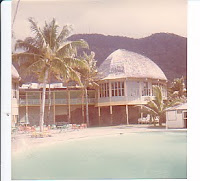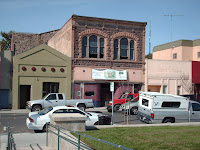When I first read about this organization it was in the piece, “Watchdog group has no cheers for wine industry,” by Andrew S. Ross which was published in Wine Business Daily on Tuesday, December 8, 2009. Then, the next day I accessed the full paper as written by the Marin Institute (MI). I must say, I was amazed at what I would have to call either the naivety or the outright arrogance of the MI writer(s) who prepared the report they titled, “The Myth of the Family Winery - Global Corporations Behind California Wine.”
The use of the word “Family” in company literature - small or large -is not restricted to the wine industry. It can be found in many business industries as a “friendly, loving nurturing, etc. ” attitude descriptor to the consumer. The term as used in business literature is not necessarily descriptive of the people owning the company but rather the way the company likes to think it operates or at least what it wants its consumer audience to think. MI cites the following: Trinchero Family Estates and Jackson Family Wines even use the word “family” in their corporate names.” This is not a bad or even a misleading descriptor when you consider who is top management and ownership in these organizations -- because they are family.
The consumer who bought R. Mondavi wines before it went public, then after it became a traded winery stock and still bought it after being gobbled up by Constellation, understood the use of the term “family” throughout all the transitions. The consumer who buys Dunn, Forman, Spottswoode, Caymus, Screaming Eagle, and many more similar small, mid and family owned and produced wines does not necessarily read the ads of Constellation, Foster’s, Gallo, Sutter Home and other such giants. Two entirely different audiences.
Both the Wine Institute and The Family Winemakers of California claim that membership is based on one vote per membership payment and thus their leadership is not based on just the size production of their winery. Like any other organization, this does not preclude the joining together of common interests to vote in a block on matters that pertain to that voting block. This can be seen in our Congress where there are special interest caucuses. It can be seen in the voting stock of all corporations where proxy’s are solicited to be voted for one candidate of the board over another. There has been and always will be such legal solicitations of support for one person or issue over another.
Production, marketing and sales programs for a company with millions of cases of wine to sell are greatly different than what a “cult” winery with under 1,000 cases of wine production has to cope with. And, this is not bad! No large corporation is going to let such a small producer “talk” or negotiate for them because the very little guy does not necessaily really hold a true understanding of what even a few percent of a cent tax means on a giant producer with a Board of Directors caring fudiciary duties to its stockholders.
As to lobbyists, I can only say tha MI is either naïve or refuses to consider the truth about what all trade association advocacy organizations such as the Wine Institute do in Sacramento and Washington D.C. -- THEY LOBBY for the interest of their group members. Does MI think that lobbying against taxing wine is any different than taxing alfalfa? The farmers in the latter group are surely going to protest and fight against being taxed any further than they are already
MI states.” Wine producers’ success in gaining authorization to ship their product directly to consumers sets a precedent for beer and distilled spirits producers to circumvent the three-tier system as well.” Wow! Where did this come from? MI offers absolutely no background laying the foundation for making such a scare tactic statement as they have made. MI should do some very important historical background research as to why alcohol after Prohibition, was the only commodity allowed to be controlled independently by each State while all others were allowed free transport across State lines.
MI says that it cannot discover the composition of the membership in the Congressional Wine Caucus. MI says Rep. Radanovich declined to give them a list of the members. Did Senator Thompson also decline? I wonder if MI has tried the Freedom of Information Act to gain access to the list of members?
In modern usage, sophism, sophist, and sophistry are derogatory terms, due to the influence of many past philosophers.
A sophism is taken as a specious argument used for deceiving someone.
It might be crafted to seem logical while actually being wrong, or it might use difficult words and complicated sentences to intimidate the audience into agreeing, or it might appeal to the audience's prejudices and emotions rather than logic, i.e. raising doubts towards the one asserting, rather than his assertion.
The goal of a sophism is often to make the audience believe the writer or speaker to be smarter than he or she actually is, e.g., accusing another of sophistry for using persuasion techniques.



























